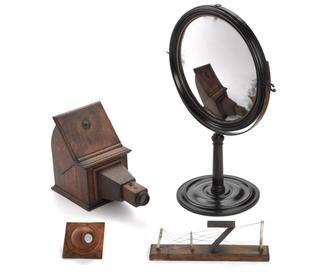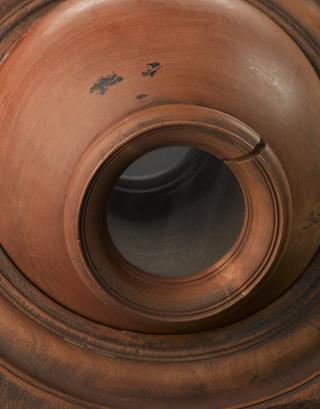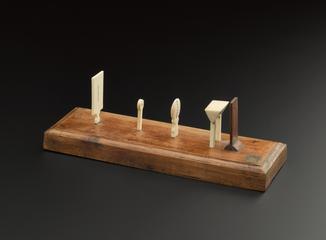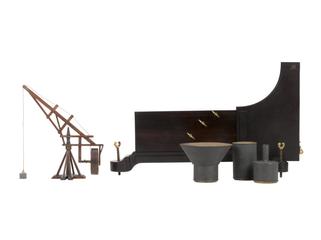
Demainbray's polemoscope
- Made:
- 1701-1752






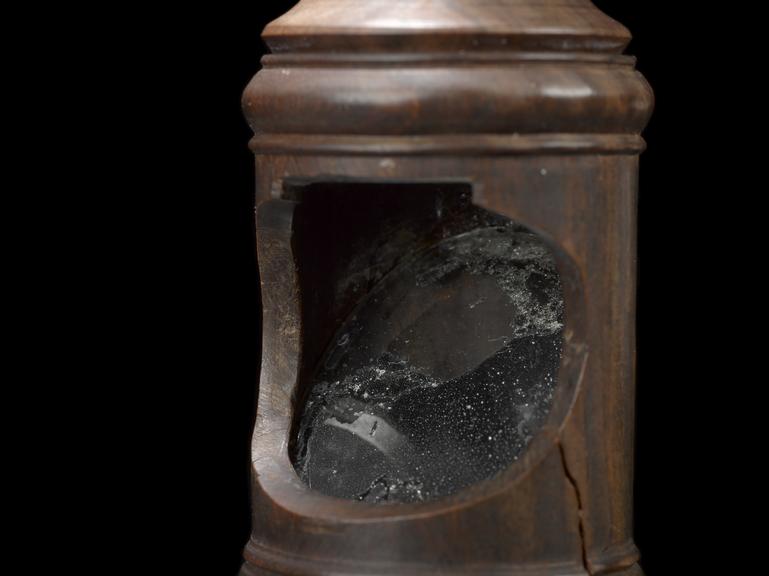


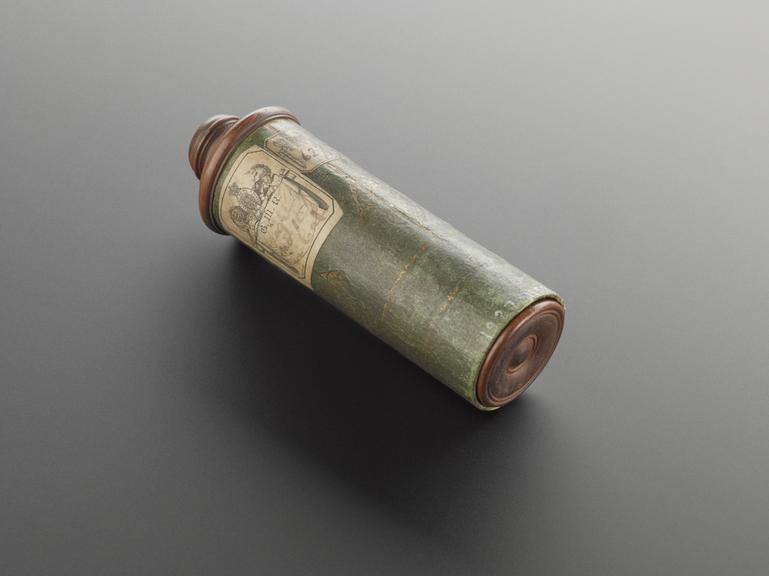
Polemoscope and case, unknwon maker, before 1753, but once owned by Stephen Demainbray.
The polemoscope, also known at the time as a ‘jealousy glass’, was a device that was disguised as an opera glass. Two lenses (one convex and one concave) and an angled mirror allowed users to discreetly observe their neighbours at the theatre. It once belonged to Stephen Demainbray who used it in his lectures on natural philosophy. Demainbray worked as superintendent at the King's observatory at Kew from 1768 and his collection of instruments and apparatus was absorbed into the King's own collection.
Details
- Category:
- King George III
- Object Number:
- 1927-1158
- Materials:
- oak, glass, speculum, vellum, pasteboard, brass (copper, zinc alloy) and paper (fibre product)
- Measurements:
-
overall (assembled): 120 mm x 40 mm diameter, 0.05 kg
- type:
- polemoscope and case
- credit:
- King's College, London

